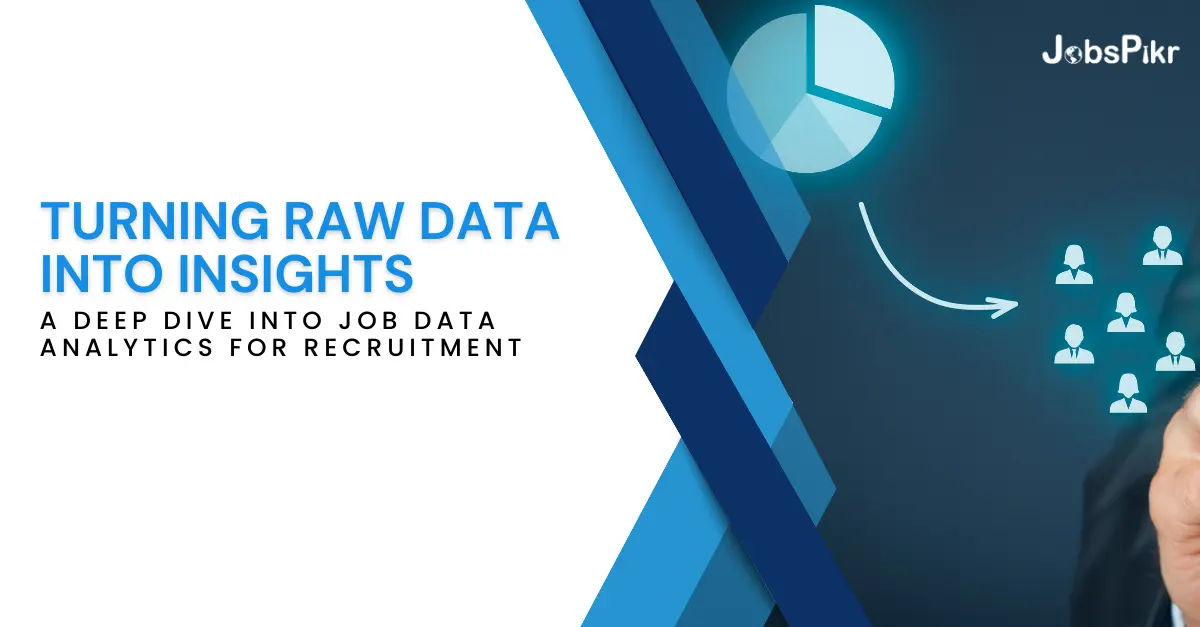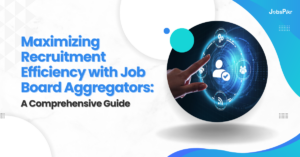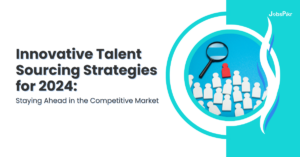In today’s dynamic job market, new trends pop up daily and industries update new hiring requirements every few months. In such a scenario, companies are trying to get ahead of their competitors via any means necessary. This may often involve poaching high-level executives from rivals, hiring junior employees at a lesser cost to reduce expenditure, offering added benefits like stock options, and more. However, instead of going for knee-jerk reactions, having a data-driven hiring practice in place is more likely to work out for you in the long run.
At the heart of job data analytics lies 3 major points-
- Collection of job data from various sources (websites). You may be fetching job data analytics for different roles, locations, sectors, seniority levels, and more.
- Collating the job data and making it easily queryable by other systems. You may have 4 different workflows in your hiring process. Unless you convert each process to be data-backed and allow your systems to speak to each other (by exchanging data), you may not get the optimum results.
- Interpreting and analyzing the data by allowing the minute data points to come together on the table to create a complete picture.
Different ways of using Job Data for Hiring
Most recruiters may imagine job data to be used only for finding the most appropriate candidates (job-to-candidate matching). However, job data can come in handy at multiple places starting with the creation of a job post. Whenever the position for a particular job role opens up, you can easily use data from existing job posts for such positions to come up with a fresh job posting. You can additionally add specific requirements to it if needed.
Once your job post is out, and hundreds of applicants apply to the job, filtering candidates becomes critical. You can use different types of logic to match the applicants to your role. You can search for critical keywords in the resumes of candidates, you can search for specific skills, or find any mention of certain tools. In case too many candidates pass your initial filter, you could use a short interview and then analyze the interview data (video data) and compare it to job applicant data available on the internet to find how a person’s profile ranks.
Having finalized the candidate, you will need to clear the most critical step– offering adequate salary and benefits. Salary benchmarking will come in handy here. Analyzing the salaries and benefits of hundreds of candidates for a particular role in a specific region can help you come up with a competitive package. Salary benchmarking not only helps you hire better but also helps you keep your attrition rate low. Periodic reviews along with salary adjustments based on market standards can make your employees more content and in turn, produce better results.
Delving deeper into the Data
Looking at the data through a narrow view may not allow you to look at the entire picture. This is why you need to look at new data in conjunction with historical Job Data. Looking at a large dataset will help you find trends not evident in the raw data. Certain solutions that may be extracted are–
- Shortlisting job sourcing flows that have provided you with the most relevant candidates for your advertised positions.
- Find out the effectiveness of diversity and inclusivity policies in the long run.
- Reduce time-to-hire and cost-per-hire metrics to make hiring new candidates more sustainable.
- Understand candidate behavior and engagement patterns and connect those with historical data to provide every candidate with a tailored and unique pathway so that they can fulfill their career aspirations while also benefiting the organization.
- Enable your hiring team to take more objective interviews with questions targeted to understand not just the technical prowess but also get a view of his or her thought processes.
- Job data can enable companies to have a better capacity planning roadmap in place so that hiring requirements are captured early on and all vacancies are fulfilled in a manner that business faces minimal downtime.
While finding these answers may be complicated, taking the right approach is half the job done. Before you take a plunge in the sea of job data, you need to decide on the primary problem statement that your organization aims to solve with job data analytics. Once that has been fulfilled, you can focus on auxiliary problems. Without a goal in sight, you are more likely to be running in circles.
Next, you may want to define key metrics. These may be your current hiring costs, sourcing expenses, advertising costs, or average time taken to find a replacement. Only when you have these numbers while starting, would you have something to compare to once you switch to data-driven hiring. Establishing clear benchmarks would ensure you can make the most of the job data in your hands.
In case you are scraping job data all by yourself, cleaning, normalization, and formatting of the data will be crucial to ensure more accurate results. These processes may involve fixing duplicate entries, removing job data with missing data points, and standardizing units.
Once the data is clean and ready to consume, you will need to decide the type of algorithms you want to use. You may use NLP (Natural Language Processing) to “read” resumes of candidates and extract valuable information or Neural Networks for matching candidates to job positions. While a variety of options are available, you will need to figure out which one to apply to the data and what cloud infra to use to get the job done.
Like any other Data Backed System, reinforced learning is a must. You may not get usable results in the first few times, but as you keep feeding new data and make minor adjustments, your models will improve and in turn reduce your hiring expenses and efficiency.
The Job Data
For most companies, investing in infrastructure and talent to scrape job data, process it, and consume it may be difficult. This is why JobsPikr gets you everything on the same plate. Whether you want raw data from thousands of websites or dashboard-based solutions built on top of it– you have access to all. You can filter out jobs based on location, role, specific keywords, and even sector. With multiple tools at your disposal, you can upgrade your hiring workflows to use job data in less than a day. A leaner hiring team powered by AI and job data analytics can do a better job than traditional hiring teams. This is the future and those unwilling to adapt are likely to leave good candidates on the table– for their competitors to pick up.




